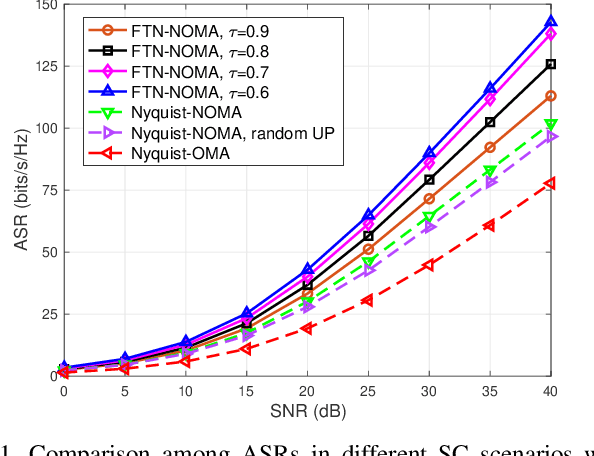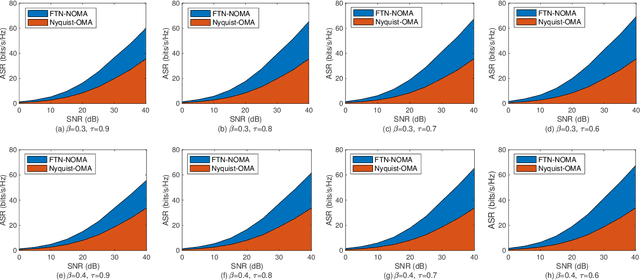For a Higher Capacity: The Combination of FTN and NOMA Technologies in SC and MIMO Scenarios
Paper and Code
Jul 18, 2022



The development of the industrial Internet of Things (IoT) calls for higher spectrum efficiency (SE). Faster than Nyquist (FTN) and non-orthogonal multiple access (NOMA) are both promising paradigms to improve the SE without any extra spectrum resources required. The combination of FTN and NOMA is an interesting issue and has been focused on recently. In the NOMA technology, user pairing and power allocation are key algorithms determining system capacity. This paper first proposes a joint user pairing and power allocation algorithm for the FTN-based single-carrier (SC) NOMA system. Then, the FTN-based multiple-input-multiple-output (MIMO) NOMA is studied and a dynamic user pairing and power allocation scheme is presented. In both scenarios, the maximum available sum rate (ASR) is the target. While based on the fairness principle, the user's SE in the NOMA system is guaranteed to be no less than that in the OMA system. Simulation results show the advantage of the FTN-based NOMA with the proposed scheme in ASR and quality of service (QoS) performance. As far as we know, this paper is the first solution to the issue of user pairing and power allocation in FTN-based NOMA, which proves the great advantage of the combination of these two state-of-the-art technologies.
 Add to Chrome
Add to Chrome Add to Firefox
Add to Firefox Add to Edge
Add to Edge